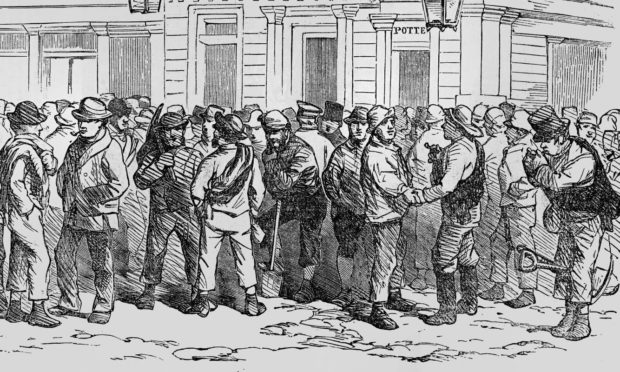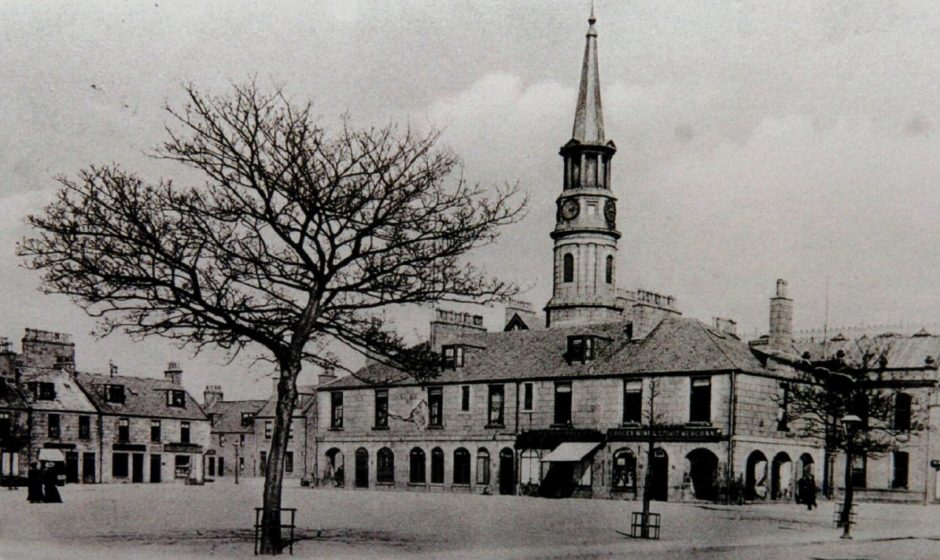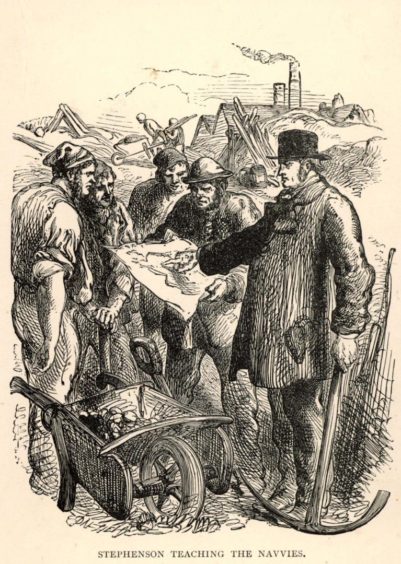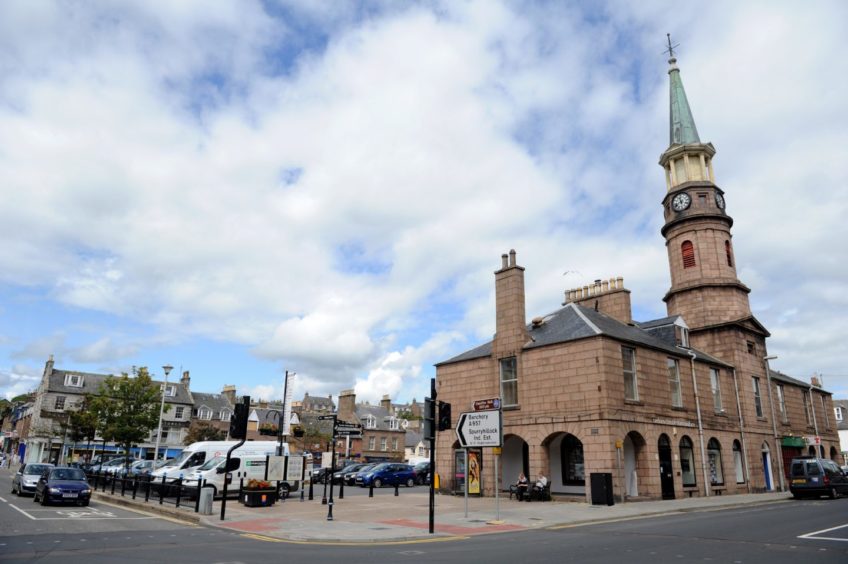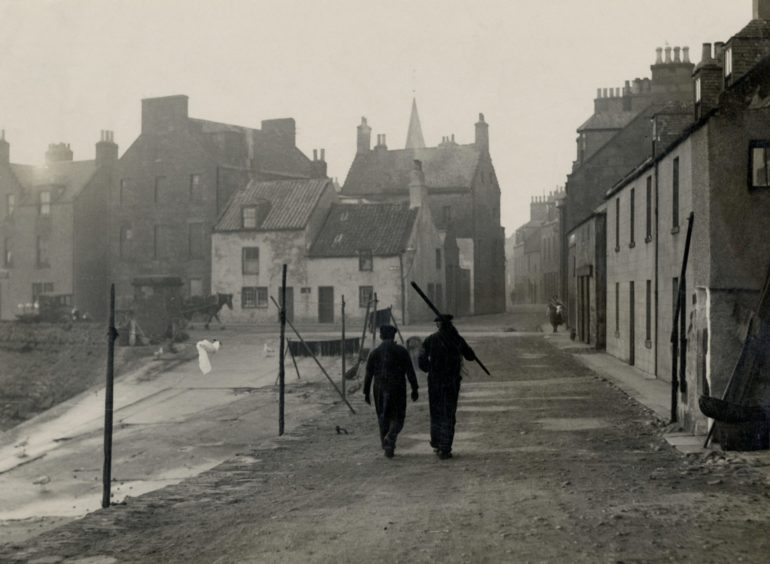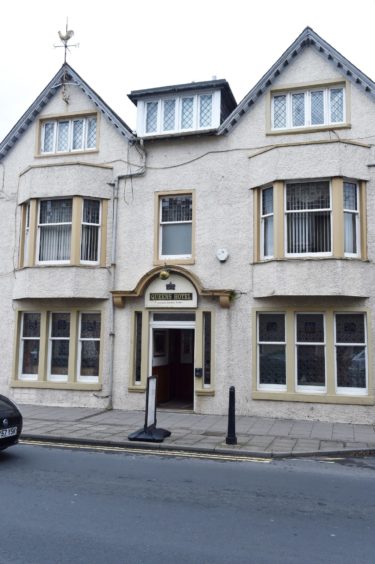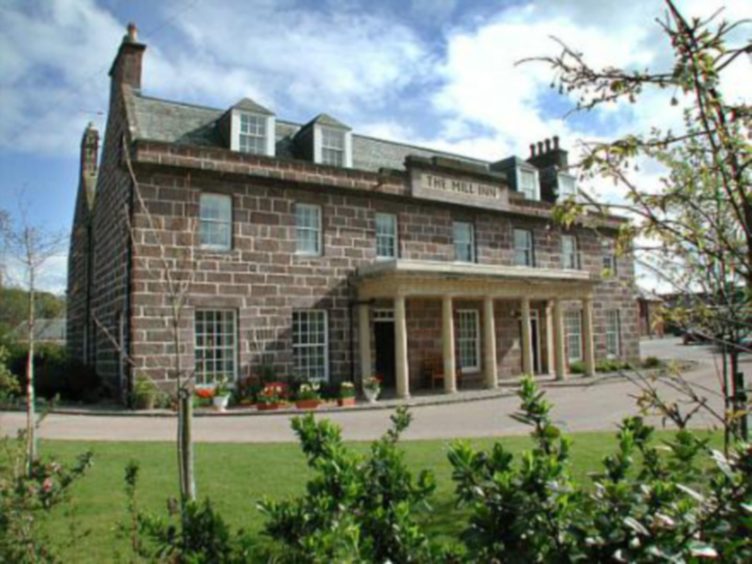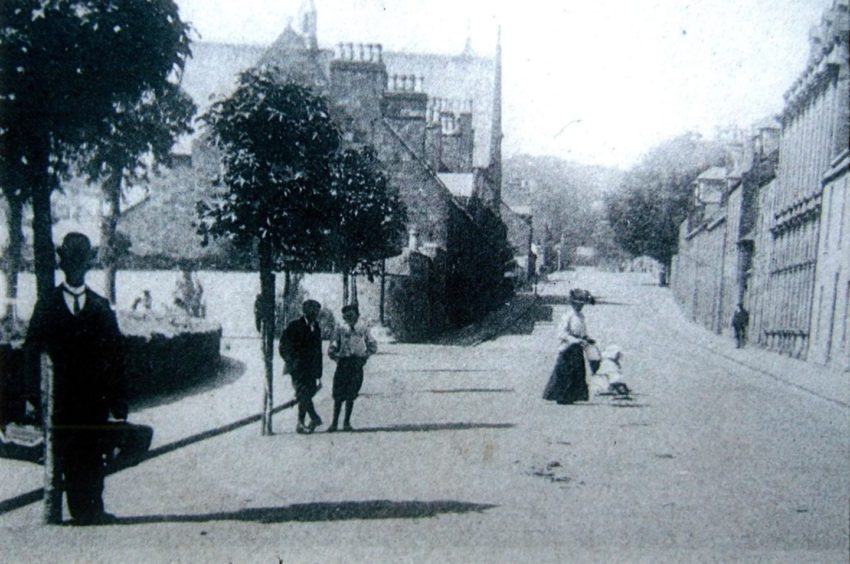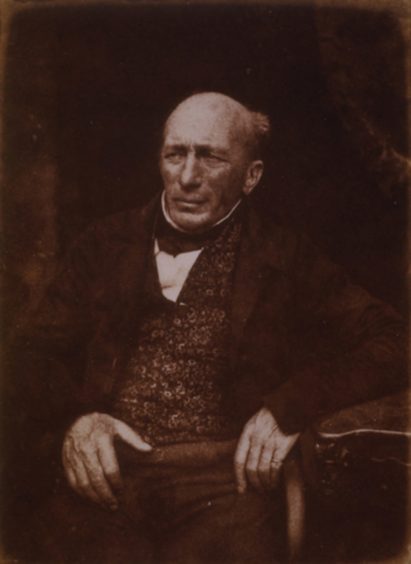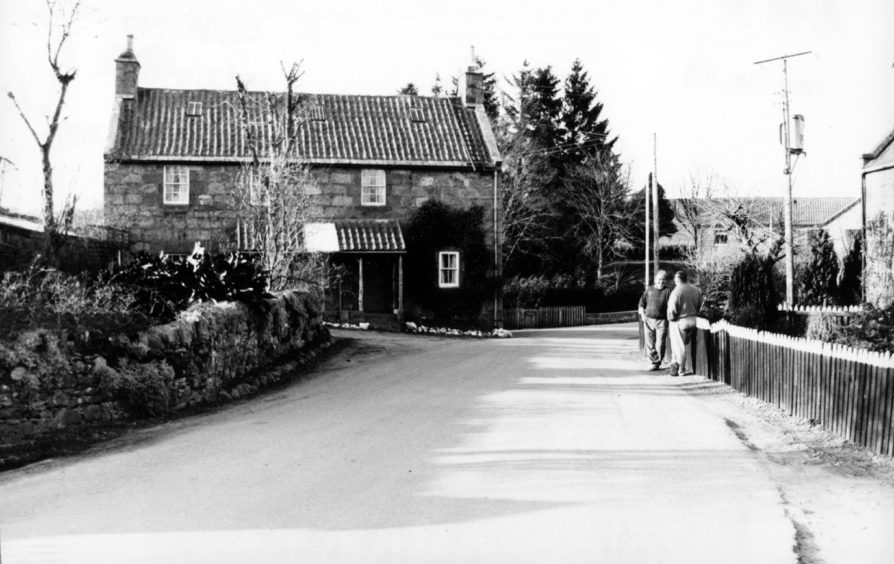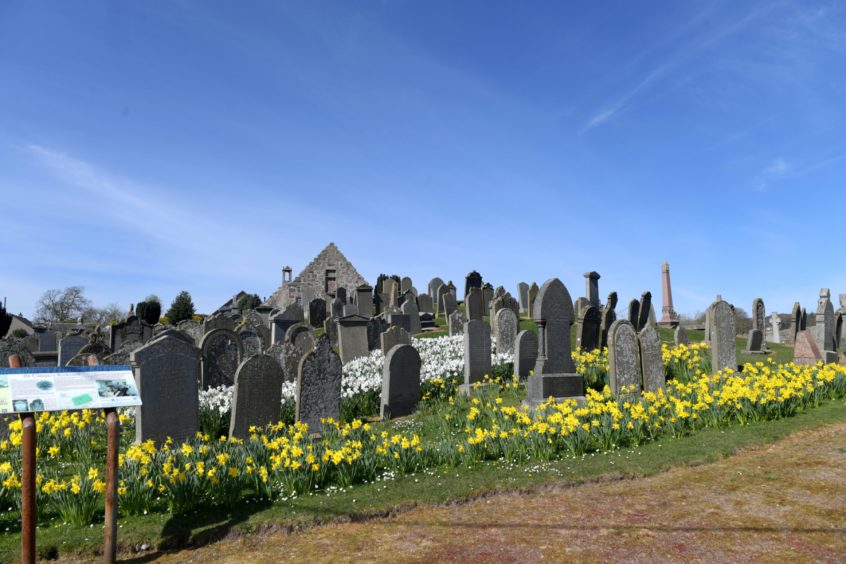Fake news is nothing new – in fact, it sparked a riot in Stonehaven which left one man dead, others beaten in the street, and shops and homes attacked and wrecked.
All of this broke out because navvies working on building the Aberdeen railway line mistakenly got it into their heads local shopkeepers were pushing up prices to rip them off.
The murder and mayhem which ensued on January 5 1848 – families arming themselves with swords to fend off home invasions, cornered police fighting their way clear of a mob, a horseback dash into Aberdeen to raise the militia – shocked the quiet Mearns town.
Paying too much
But local historian Dr Keith Stewart said the infamous navvy riot, involving Highlanders working on the railway, was based on rumours and misunderstanding.
“At the time, the railway had cut their workforce and their wages”, said Dr Stewart, former vice-chairman of the Stonehaven Heritage Society, adding the navvies were staying in lodgings in the town but had to buy their own food.
On top of the pay cut, the already disgruntled Highlanders were finding food prices going up in local shops, almost doubling, and blamed the store owners for trying to make money out of them when they could least afford.
“They took it into their heads that ‘I’m paying too much for this, they’re just trying to rip me off’,” said Dr Stewart.
“But it was just because of the increase in the cost of provisions. There had been a crop failure in 1847 and that’s why you had the hyperinflation of prices going up. It had nothing to do with shopkeepers raising prices so they could make more money out of the navvies.”
Prices apart, tensions had been simmering between the locals and the Highland workers before the riot broke out on January 5 – which the people of Stonehaven then still celebrated as Christmas Eve, following the old calendar.
Spirit of revenge
The Stonehaven Journal reported the “fatal riot” and said: “The immediate cause… can be distinctly traced to a brawl which took place on the evening of Saturday week previous between a party of the townspeople and some of the navvies in which the latter were defeated.
“Since then, the labourers engaged in that fight seem to have themselves cherished and propagated among their comrades a fierce spirit of revenge.”
Dr Stewart said the trouble started when Gaelic-speaking navvies gathered in Stonehaven’s Market Square to air their grievances over rising prices and were clearly looking for a brawl.
“It all came to a head on January 5, when the navvies thought ‘we’re Highlanders, we had better go and show these Stonehaven folk they can’t put one over on us’,” he said.
“So they employed a bellman to call all the navvies into the square. So there was 200 to 300 in the square, with picks and staffs. Then they just moved off through the town. Anyone they came across they would ask ‘can you speak Gaelic?’
“Of course they couldn’t so they just beat them up.
Bludgeoned around the head
“They were also targeting people who beat them up in the fight before, so they actually attacked specific houses.”
The Press and Journal of the day reported those navvies who weren’t armed went into Dunnottar Woods to cut branches as clubs. They then marched on Stonehaven’s Old Town rampaging as far as the pier, then back towards the Market Square “shouting and smashing every window where a light appeared”.
The paper added: “They betook themselves to parade the town, assaulting every person they met who could not speak Gaelic.”
One of their unfortunate victims was a William Murray, who had come from Forfar to see friends and was attacked and “bludgeoned around the head” in the town’s Ann Street.
The P&J reported: “The unfortunate man, Murray was found lying in a state of insensibility by a girl who was passing, and on being carried to Mr Milne’s in the Old Town, it was found that his back was broken, and his skull fractured. He was only able to say ‘I am murdered, and the navvies have done it’, when he died.”
Family armed with swords
Another victim was a merchant, Mr Smith, who was attacked in his shop at Bridgend.
A report in the Stonehaven Journal said: “He was knocked down by a blow on the head with a bludgeon and while lying on the ground he was kicked and maltreated in the most savage manner. The ruffians even had recourse to the use of knives to glut their vengeance, for Mr Smith was severely stabbed about the legs and thighs. Finally, they left him lying on the ground for dead.”
Now the mob turned their attention to businesses and homes in the town, smashing all the windows in the Commercial Inn, the Queens Hotel today, before attacking the Mill Inn, breaking windows and trying to storm the doors, but were kept at bay by the owner and friends.
The rioters attacked the home of a Mr Knox, a saddler, wanting vengeance on the sons of the house who had helped the police in previous disturbances. They smashed all the glass in the front of the home and stormed the doors.
The Stonehaven Journal said: “A party of them had got as far as the kitchen when Mr Knox, aided by his own family and a party who were in the house at the time, having armed themselves with swords and other weapons, met them there and showed such a determined front and made so gallant an assault on the rascals that they instantly retreated.
“Just as they were fairly beat out of the house, one of them again attempted to effect an entrance, when he received so severe a sword-stroke that his arm dropped powerlessly to his side and he was incapacitated from doing more mischief for that night at least.”
Cries of murder throughout the town
The rampage continued until around 9pm, when the Highlanders dispersed and peace returned to the streets as shocked residents tended the injured and surveyed the damage caused.
The P&J reported: “Altogether, about 20 people were maltreated, and for anything the mob cared, were in some instances left for dead in the streets; but they are now out of danger.
“Throughout the town, the cries of murder were heart-rending, and the scene appears to have been one which can scarcely be described; indeed, such was the state of the town, that no man was safe to leave his house, and consequently no official steps could be taken by the local authorities.”
There was, of course, a police presence in Stonehaven, but not one strong enough to take on up to 300 armed and violent navvies.
Dr Stewart said: “There were only five policemen, so they were not going to be able to cope with this gathering mob. There was nothing they could do.”
Horse-back dash for help
The Stonehaven Journal tells of police constables trying to stop the attacks with one “receiving so severe a blow on the head that nothing but the protection of his hat saved his life”.
As the riot raged, constables retreated to Cameron Street, then attempted to muster near the Commercial Inn, but the mob launched an attack on them.
“Overpowered by numbers, the police were compelled to give way, each consulting his safety in flight. In this they all succeeded, except one who was surrounded near the Old Temperance Hall and had literally to fight his way thence towards Allardice Street,” reported the Stonehaven Journal.
So severe was the situation, that one of Stonehaven’s most famous sons, Captain Robert Barclay – the “celebrated pedestrian” who walked 1,000 miles in 1,000 days – took action.
“He just did the sort of thing he always did and got on a horse and went straight to Aberdeen to get the military, and they arrived in Stonehaven the next day,” said Dr Stewart.
The morning after the riot, the town’s Superintendent of Police, Alexander Weir swore in about 150 special constables from the town’s men. Along with the militia, they descended on the navvies’ lodgings and rounded up the ringleaders to be tried for their crimes.
Four men were eventually found guilty of mobbing, rioting, malicious mischief, assault, and culpable homicide. Two were jailed for 18 months, one for a year, but a Donald Davidson was found to be “more culpable” than the others – he might have landed the fatal blow on Murray – and was sentenced to seven years transportation.
Remember your history
Dr Stewart said: “Davidson was actually in charge of the navvies. He would have been at the front of the navvies as they wandered through. Eyewitnesses said he put the fatal blow onto this poor, young lad. He was staying in lodges at Kirkton of Fetteresso. The military ransacked the houses just looking for these people.”
While his victim, William Murray was buried in the kirkyard at Kirkton of Fetteresso, Davidson, who was from Inverness and never been convicted of anything before, was put on a transport ship to Van Diemen’s Land, modern day Tasmania.
His sentence was for seven years, but Davidson never returned home to Scotland. He married a local woman in 1853 while he was working as a boatman and they had six children together. He died in Hobart Hospital in August 1874 at the age of 57.
Today, the extraordinary events of 172 years ago are all but forgotten in Stonehaven.
But Dr Stewart is bringing them back into the spotlight by writing a piece about the navvy riots for the Tolbooth Times, produced by the Stonehaven Tolbooth Association.
“I don’t think that many people in Stonehaven are aware of it,” he said. “It was in 1848 and it just goes out of people’s heads. But you have to remember your history, even the unsavoury side, just to understand what has gone on in the past. And, after all, someone died.”
